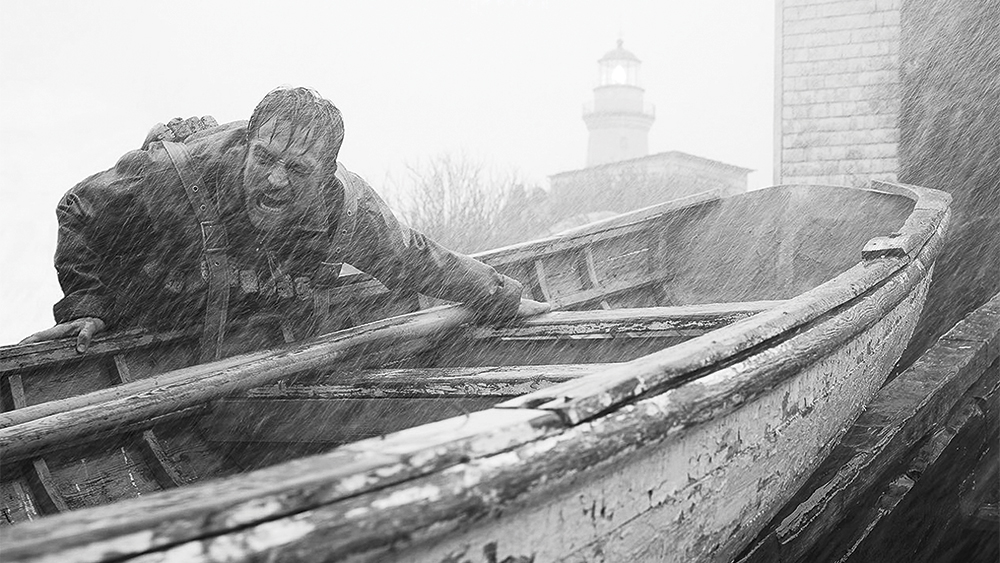‘Lighthouse’ Camera Choices Signal Vintage View
By David Heuring
LOS ANGELES (Variety.com) – Jarin Blaschke’s black-and-white cinematography in Robert Eggers’ “The Lighthouse” lends the proceedings a mythic quality and highlights the tour-de-force acting by Willem Dafoe and Robert Pattinson. The monochrome images are in harmony with the elemental story: trapped together in an unforgiving 1890s landscape, two lighthouse keepers begin to lose their grip on sanity.
Blaschke, a fresh face in the Oscar race, is wary of overthinking or rationalizing his visual choices.
“I like to trust instinct, especially at the beginning of a project,” he says.
“You have a lot of time later to edit and refine the instincts, to distill and purify, testing and comparing ideas to find the strongest version.”
With a still photography background, Blaschke was comfortable with the squarish 1.19:1 aspect ratio.
“Without all that distracting color, the images are more handsome and contrasty,” he says. “It leads you towards the minimal in everything — composition, the number of shots, and camera movement. The light is harder. When I’m shooting color, I tend to go a little softer in contrast. Here, I suppose I wanted to see how far I could push it, since I had the opportunity.”
When it comes to lighting, the cinematographer tends to be more grounded in reality. In “,” this tendency balances the dreamy quality of the vintage 1930s and ’40s Baltar lenses, which were combined with a Panavision Millennium XL2 camera, Eastman Double-X 5222 film stock in the 35mm format, and a specially designed filter that mimicked the color shift of old orthochromatic films. The resulting shift in hues mutes red tones and emphasizes the weather-beaten faces.
Although it’s imperceptible in the film, these choices required significantly more light, as did the filmmakers’ desire for greater depth of field.
“I like the challenge of shooting on film,” says Blaschke. “You can have a specific methodology and you can be very strict. But that’s always balanced by a little uncertainty. I don’t know why that attracts me, but it does. You need to watch dailies to see what you’ve got. It’s a weird mix of shooting with just enough defects to transport the audience, while keeping it all controlled.”
A custom-made Fresnel lens serves as the mysterious focal point of the story. Usually, cinematographers relish a story with light itself as a major character.
“No pressure!” says Blaschke with a laugh. “The one big nerve-wracking mystery for us was what the machine room beneath the lighthouse would look like. The script called for magical swirling patterns, which made me nervous. I’m more literal when it comes to lighting, so I have to see it.
“We visited an actual working lighthouse, and it did just that — made swirling patterns. I didn’t know what else to do but shine light through the overhead grate. Because the film stock was relatively insensitive by today’s standards, I really had to take the strongest HMI that would fit inside of the spinning Fresnel.”
The light blooms subtly against the edges of the grate — exactly the kind of controlled defect that help make “The Lighthouse” visually superlative.
Blaschke is in Belfast with Eggers prepping their next project, “The Northman,” a Viking saga set in Iceland in the 10th century. He plans to shoot film.

